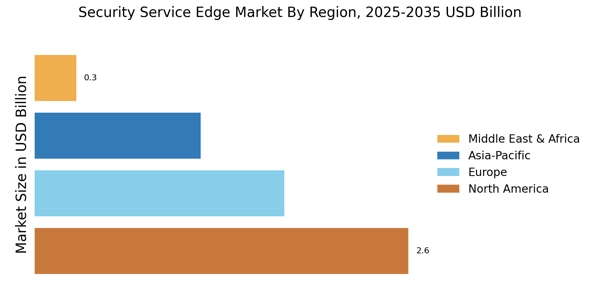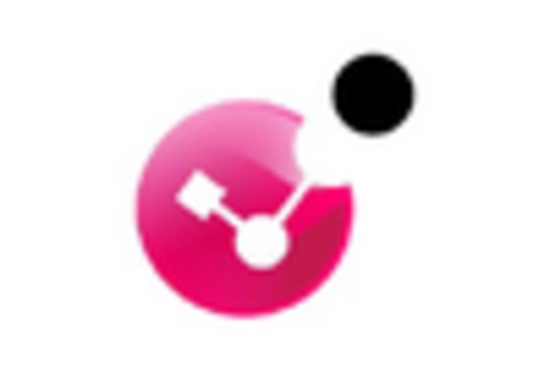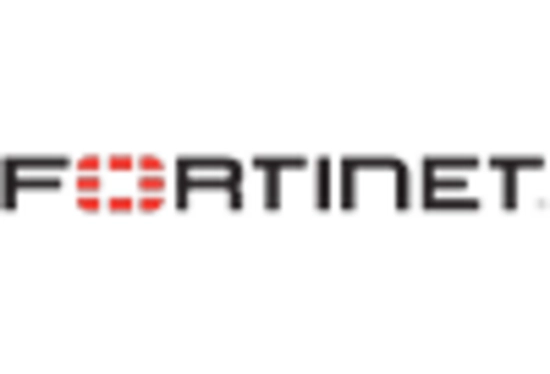The Security Service Edge Market is currently characterized by a dynamic competitive landscape, driven by the increasing demand for integrated security solutions that address the complexities of modern digital environments. Key players such as Zscaler (US), Palo Alto Networks (US), and Cloudflare (US) are at the forefront, each adopting distinct strategies to enhance their market positioning. Zscaler (US) focuses on cloud-native security solutions, emphasizing zero trust architecture, which appears to resonate well with enterprises seeking robust security frameworks. Meanwhile, Palo Alto Networks (US) is leveraging its extensive portfolio through strategic acquisitions, enhancing its capabilities in threat detection and response. Cloudflare (US), on the other hand, is expanding its global footprint by investing in regional data centers, thereby improving service delivery and compliance with local regulations. Collectively, these strategies contribute to a competitive environment that is increasingly centered around innovation and customer-centric solutions.
In terms of business tactics, companies are increasingly localizing their operations to better serve regional markets, which may enhance responsiveness to local security needs. The market structure is moderately fragmented, with several players vying for dominance, yet the influence of major companies remains substantial. This competitive structure fosters an environment where innovation is paramount, as companies strive to differentiate themselves through advanced technologies and tailored services.
In August 2025, Zscaler (US) announced a partnership with a leading telecommunications provider to enhance its zero trust security offerings. This collaboration is strategically significant as it allows Zscaler to leverage the telecom's extensive network infrastructure, potentially increasing its market penetration and service reliability. Such partnerships are indicative of a broader trend where security providers seek to integrate their solutions with existing telecommunications frameworks, thereby enhancing their value propositions.
In September 2025, Palo Alto Networks (US) unveiled a new AI-driven threat detection system aimed at improving response times to cyber threats. This development underscores the company's commitment to innovation and positions it favorably against competitors. By harnessing artificial intelligence, Palo Alto Networks is likely to enhance its operational efficiency and provide clients with more proactive security measures, which could be a game-changer in the competitive landscape.
In October 2025, Cloudflare (US) launched a new suite of security tools designed specifically for small to medium-sized enterprises (SMEs). This move appears to be a strategic effort to capture a segment of the market that has been historically underserved. By tailoring solutions to the unique needs of SMEs, Cloudflare may not only expand its customer base but also foster loyalty among smaller businesses that require robust security without the complexity of larger enterprise solutions.
As of October 2025, the competitive trends in the Security Service Edge Market are increasingly defined by digitalization, sustainability, and the integration of artificial intelligence. Strategic alliances are becoming more prevalent, as companies recognize the value of collaborative innovation in addressing complex security challenges. Looking ahead, it is likely that competitive differentiation will evolve, shifting from traditional price-based competition to a focus on technological innovation, reliability, and the ability to deliver comprehensive security solutions that meet the diverse needs of clients.


















Leave a Comment